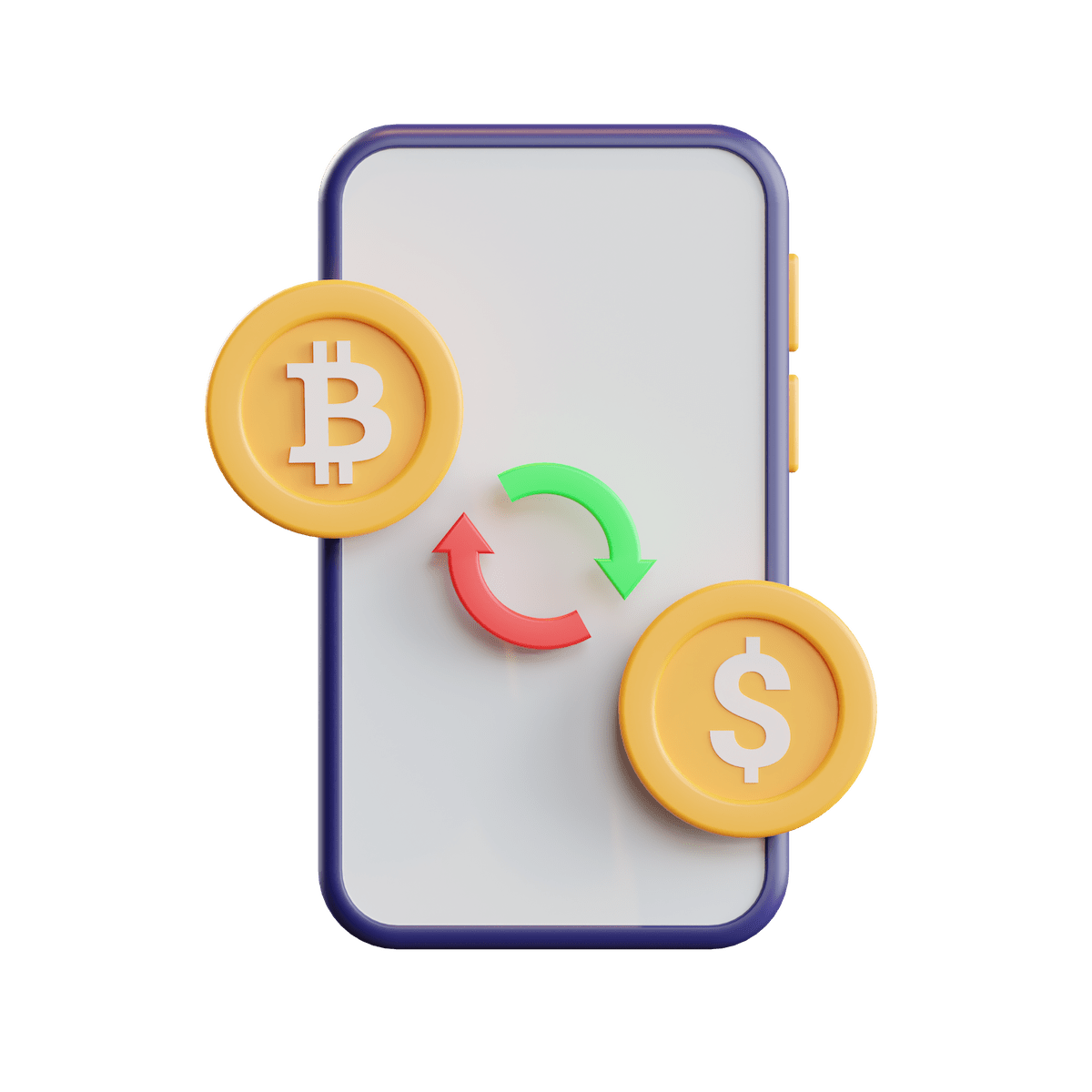Best Services to Exchange Crypto to Cash in 2024
Cryptocurrencies have taken the world by storm, offering new and exciting opportunities for anyone to invest, trade, and spend digital assets worldwide. But what happens when you need to exchange some of that crypto for cold, hard cash? Whether you’re looking to spend your earnings or simply cash out your investments, knowing how to safely and efficiently exchange crypto for cash is crucial. In this guide, we will explore various methods, factors to consider, and alternative ways to utilize your crypto holdings when you need to exchange crypto for cash.


Key Takeaways
This comprehensive guide will cover the top methods for exchanging crypto for cash, such as centralized exchanges and peer-to-peer platforms, as well as key factors to consider before making a move, like tax implications and security. We will also provide a step-by-step guide for a seamless exchange experience and discuss alternative ways to use your crypto beyond cashing out when you want to exchange crypto for cash. Buckle up and let’s dive in!
- Exchange crypto for cash securely and efficiently using centralized exchanges, peer-to-peer platforms, wallets, crypto debit cards, or Bitcoin ATMs.
- Consider tax implications, trading/withdrawal fees, and security when exchanging cryptocurrency for cash.
- Maximize your holdings by spending directly at merchants or earning passive income through staking & lending, and crypto signals.
Exchange Crypto to Cash in 2024
| Exchange | Rate | Cryptocurrencies | Withdrawal Time | Transaction Fees | Payment Methods | Links |
|---|---|---|---|---|---|---|
|
|
  
|
1-60 minutes |
0.0003 BTC |
   |
||
|
|
  
|
1-60 minutes |
0.2% |
 |
||
|
|
  
|
within 30 minutes |
floating |
 |
||
|
|
  
|
up to 24 hours |
0.025% |
 |
||
|
|
  
|
up to 2 working days |
1 EUR |
 |
||
|
|
  
|
within 1 hour |
30 USD |
 |
Top Methods for Exchanging Crypto to Cash
When it comes to exchanging crypto for cash, there are several popular methods, each with its pros and cons. Let’s quickly set a difference between them by looking at the table below.
| Criteria / Method | Centralized Exchanges | Peer-to-Peer Platforms | Crypto Wallets | Crypto Debit Cards | Bitcoin ATMs |
|---|---|---|---|---|---|
| Ease of Use | User-friendly interfaces, straightforward for beginners | Can be complex, requires negotiation | Some technical knowledge needed | As easy as regular debit cards | Simple, like regular ATMs |
| Fees | 0.1% to 2% per transaction | Lower than exchanges, small transaction fee on some platforms | Network fees, no wallet fees | Card issuance, transaction, conversion fees | 5% to 15% per transaction |
| Identity Verification | Government-issued ID, sometimes proof of address | Varies; some require, others don't | None for wallet, may be needed for linked services | Typically required | Varies; some require ID |
| Control Over Pricing | Limited; market rates | High; users set own prices | Dependent on linked services | Limited; set by card provider | Low; set by ATM provider |
| Flexibility in Payment Methods | Bank transfers, cards, sometimes PayPal | Very high; includes various methods | Limited to options of linked services | High; widely accepted | Cash withdrawals only |
| Direct Access to Funds | Through platform; not immediate | Direct transactions; depends on payment method | Immediate access to crypto, conversion depends on services | High; at point of sale | Immediate cash dispensing |
| Gradual Spending Capability | Not directly applicable | Not applicable; direct trade | Not applicable; storage focused | High; for regular expenses | Not applicable; for withdrawals |
We will now delve into the specifics of these methods.
Centralized Exchanges: The Most Common Route

Centralized exchanges, such as Coinbase and Binance, are the most widely used methods for exchanging crypto for cash. They offer a convenient and liquid marketplace where users can easily trade various cryptocurrencies for fiat currencies like USD or EUR. However, these platforms often charge transaction fees, which vary depending on the exchange and the type of trade. Additionally, most centralized crypto exchanges require users to verify their identity as part of the Know Your Customer (KYC) process.
Despite these drawbacks, using centralized exchanges can be advantageous for many users. Here are some advantages:
- They are user-friendly and provide a wide range of trading pairs, making it easy to convert your crypto into cash.
- If your crypto is already stored in an exchange wallet, selling it via the platform is often the quickest way to liquidate your holdings.
- Just be aware of potential tax implications when selling your crypto, as you may be liable for taxes on any capital gains.
Peer-to-Peer Platforms: More Control and Flexibility

Peer-to-peer (P2P) platforms offer a more decentralized approach to exchanging crypto for cash by facilitating direct transactions between individual buyers and sellers. This method provides users with more control over pricing and increased flexibility in payment methods, such as bank transfers and money transfer apps. However, the process can be time-consuming, and trust between parties is crucial to avoid scams and ensure successful transactions.
To mitigate risks, P2P platforms often employ escrow functions, which hold the assets until both parties confirm the transaction’s completion. This provides a secure environment and facilitates the transfer of assets. Popular P2P platforms include LocalBitcoins and Paxful, where users can set their own prices and negotiate deals with potential buyers and sellers of crypto, also these crypto exchanges are available in Poland.
Converting Crypto via Wallets: Direct Access to Funds

Crypto wallets, such as Ledger Nano X and Trezor Model T, offer a more direct approach to exchanging crypto for cash by securely storing users’ private keys on the hardware wallet. These wallets provide user-friendly interfaces, like Ledger Live or Trezor Wallet, where users can manage their crypto assets, track portfolio balances, and initiate transactions. Additionally, both Ledger and Trezor wallets support integrated cryptocurrency exchanges, allowing users to buy, sell, or trade coins directly from their hardware wallets.
However, one potential drawback of using wallets to exchange crypto for cash is the limited options for withdrawal. Unlike centralized exchanges, which often provide direct cash withdrawals to connected bank accounts, wallets may require users to find alternative methods for cashing out their crypto. This could involve transferring the funds to a centralized exchange or using a P2P platform to complete the cash withdrawal process.
Crypto Debit Cards: Spend Your Crypto Gradually

Crypto debit cards offer an alternative way to utilize your crypto holdings by enabling you to spend them gradually, just like using a traditional debit card. These cards offer the following benefits:
- Convert your crypto to fiat currency instantly at the point of sale
- Make purchases at merchants that accept regular debit cards
- Some cards offer cashback rewards and other perks
These features make crypto debit cards an attractive option for those looking to maximize the value of their crypto.
Popular crypto debit cards include the Crypto.com Visa Card and the Coinbase debit Visa card. Both cards allow users to spend their crypto at millions of merchants worldwide and offer various rewards and benefits. Nonetheless, it’s crucial to take into account the fees and spending limits that come with these cards, as they could affect the overall cost of using your crypto this way.
Bitcoin ATMs: Instant Conversion but Higher Fees

Bitcoin ATMs provide an instant way to sell bitcoin and exchange crypto for cash, allowing users to withdraw cash directly from the machine after converting their digital assets, such as bitcoin cash. This method offers the convenience of quick access to funds but often comes with higher transaction fees than other methods, such as selling Bitcoin through centralized exchanges or P2P platforms.
In addition to the higher fees, availability may be limited, especially in rural areas where Bitcoin ATMs are not as prevalent. Despite these drawbacks, Bitcoin ATMs can be a viable option for those who need to access cash instantly and are willing to pay a premium for the convenience. Just remember to exercise caution when using these machines, as not every Bitcoin ATM offers the same level of security and trustworthiness.
Key Factors to Consider Before Exchanging Crypto for Cash
Before diving into the process of exchanging your crypto for cash, it’s essential to consider a few key factors to ensure a smooth and secure experience. These factors include tax implications, trading and withdrawal fees, and the security and trustworthiness of the platform or method you choose to use.
We will now examine these factors and their potential influence on your decision-making process.
Tax Implications: Be Prepared for the Taxman
One critical aspect to consider when exchanging crypto for cash is the potential tax liabilities associated with such transactions. In many countries, cryptocurrencies are considered property and are subject to capital gains tax, just like stocks or real estate. If you sell your crypto at a higher price than its purchase cost, you may be liable for taxes on the capital gain.
To ensure compliance with tax regulations and properly pay taxes, it is highly recommended to consult with a tax professional who can help you navigate the complex world of crypto taxation. Additionally, using crypto tax software like TaxBit and ZenLedger can help you consolidate all your crypto transactions for the year and analyze all taxable events, making tax filing more manageable.
Trading and Withdrawal Fees: Minimizing Costs
Another essential factor to consider when exchanging crypto for cash is the trading and withdrawal fees associated with different platforms and methods. These fees can range from 0.1% to more than 1% on some exchanges, depending on factors such as trading volume, transaction frequency, and the specific cryptocurrency being traded.
To keep costs low, it’s vital to compare fees across various platforms and methods before settling on the best option for your needs. Some cryptocurrency exchanges that offer no trading and withdrawal fees include:
- Phemex
- Crypto.com
- Kucoin
- Amplify
- Shapeshift
- Lykke
- Newton
These exchanges can present significant cost savings when you sell Bitcoin for cash or sell crypto.
Security and Trustworthiness: Avoiding Scams
Ensuring the platform or method used for exchanging crypto for cash is secure and trustworthy is of utmost importance to avoid scams and loss of funds. When evaluating a platform, consider factors such as:
- Registration with relevant regulatory authorities
- Reputation
- Security measures
- Trading volume
- Liquidity
- Fees
In addition to these factors, be aware of typical indications of a crypto scam, such as:
- Promises of guaranteed returns
- Requests for initial payment
- Mimicking established businesses
- Pressure and manipulation
By exercising caution and conducting thorough research, you can minimize the risk of falling victim to scams and ensure a safe and smooth exchange experience.
How to Safely and Efficiently Exchange Crypto for Cash: A Step-by-Step Guide
Having explored the top methods, key considerations, and alternative uses of your crypto, we can now move on to a step-by-step guide on how to safely and efficiently convert your crypto into cash. This guide will cover:
- Setting up accounts
- Verifying identity
- Initiating the exchange process
- Withdrawing fiat to a bank account
Let’s begin!
Setting Up Accounts and Verifying Identity
The first step in exchanging your crypto for cash is setting up accounts on the platforms you plan to use, such as a centralized exchange or a P2P platform. Most major crypto exchanges require users to complete a Know Your Customer (KYC) process to verify their identity, which usually involves providing personal identification documents such as a passport or driver’s license.
The identity verification process on major crypto exchanges generally takes up to 2-3 days. Once your identity has been verified, you can deposit your cryptocurrency into your exchange wallet and begin the process of exchanging it for cash. Remember to choose an exchange that is trusted and secure, such as:
- Coinbase
- eToro
- Kraken
- Gemini
- Binance
Initiating the Exchange Process
Once your account is set up and your identity has been verified, it’s time to initiate the exchange process. Here’s how:
- Select the cryptocurrency you want to sell.
- Choose the desired cash amount you’d like to receive in exchange.
- Confirm the transaction details, ensuring that the wallet address and other information are correct.
- Authorize the sale.
Upon successful completion of the transaction, your cash will be deposited into your chosen payout method, such as a bank account or a money transfer app. Remember that fees and processing times can differ based on the platform and method used, so it’s important to include these in your decision-making process when you deposit cash.
Withdrawing Cash to Your Bank Account
With your crypto now exchanged for cash, it’s time to withdraw the funds to your bank account. To do this, simply provide your bank account details to the exchange, and they will transfer the cash to your account. Bear in mind that withdrawal fees and processing times can differ among exchanges, so it’s crucial to compare these aspects before selecting the best option for your needs.
Additionally, make sure to exercise caution when withdrawing cash from a cryptocurrency exchange to a bank account. Double-check the wallet address and other details before initiating the withdrawal, and consider using personal wallets rather than exchange wallets for added security and control over your funds.
Lastly, if you don’t plan to actively trade or hold your crypto, consider withdrawing and securing your funds in a bank account to minimize potential risks.
Alternative Ways to Use Your Crypto
Beyond exchanging your crypto for cash, there are several alternative ways to use your digital assets, such as spending them directly at merchants or earning passive income through staking and lending. By exploring these options, you can make the most of your crypto holdings and potentially unlock new opportunities for growth and diversification.
Spending Crypto Directly at Merchants
Rather than exchanging your crypto for cash, you can spend it directly at merchants that accept cryptocurrencies as payment. Companies like Microsoft, AT&T, Overstock, PayPal, Starbucks, and Whole Foods are just a few examples of popular merchants that accept crypto payments. Paying with cryptocurrency at a merchant typically involves selecting the cryptocurrency payment option at checkout, entering the payment information, and verifying the payment.
When you use crypto for direct payments, you benefit from borderless transactions, lower fees compared to conventional payment methods, and the opportunity to use cryptocurrencies as a payment method. As the adoption of cryptocurrencies continues to grow, more merchants are likely to accept crypto payments, opening up even more opportunities to spend your digital assets.
Earning Passive Income Through Staking and Lending
Another alternative way to use your crypto is to earn passive income through staking and lending. Staking involves holding a certain amount of cryptocurrency in a crypto wallet and participating in the network’s consensus mechanism. By contributing to the security and decentralization of the network, stakers are rewarded with transaction fees and network rewards.
Lending your cryptocurrency, on the other hand, involves leveraging your crypto holdings as collateral for a loan. In exchange for lending your coins via a crypto lending platform, you can earn interest payments and generate profit income without actively trading or selling your tokens. By exploring these alternative options, you can make the most of your crypto holdings and potentially unlock new opportunities for growth and diversification.
Summary
In conclusion, exchanging crypto for cash can be a straightforward process if you know the top methods, key factors to consider, and alternative ways to use your digital assets. By exploring centralized exchanges, P2P platforms, wallets, crypto debit cards, and Bitcoin ATMs, you can find the best option for your needs and preferences. Remember to consider tax implications, fees, and security when making your decision, and always exercise caution to avoid scams and loss of funds. By following this guide, you’ll be well-equipped to navigate the world of crypto and make the most of your digital assets, whether it’s cashing out or exploring alternative uses.
Crypto Exchanges By Country:


